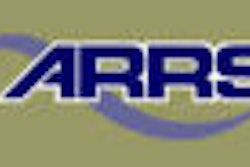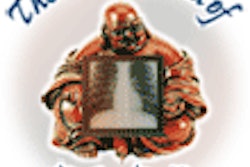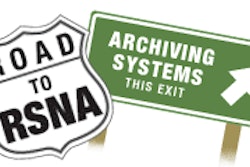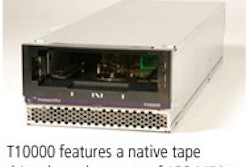BALTIMORE - The magnitude and scope of a hurricane's destructive power can rarely be accurately forecast. Even though the National Oceanic and Atmospheric Administration (NOAA) can provide estimations of size, wind speed, and possible landfall, once it comes ashore all one can do is wait it out, hope for the best, and pick up the pieces in its aftermath -- unless, of course, a disaster plan was prepared and executed for just such an eventuality.
Even with an arranged disaster plan, there are still lessons to be learned from what went wrong, what went right, and what can be done better, said Karlie Hull, chief information officer (CIO) of New Orleans-based Hematology and Oncology Specialists.
"You plan for disaster, you go through all your iterations, but you don't know what's going to come up and how to deal with it," she noted. "You really have to be able to think on your feet."
Hull designed, implemented, and maintains the network infrastructure for a group of oncology and radiation therapy physicians in nearly a dozen different geographic locations throughout the area that saw an average of about 408 patients daily. She shared her insights into disaster recovery during a presentation at the Towards the Electronic Patient Record (TEPR) conference Monday afternoon.
The physician group utilized an electronic medical record (EMR) application from oncology information technology (IT) developer Impac Medical Systems of Mountain View, CA (a subsidiary of Swedish radiation therapy vendor Elekta). Billing management for the practice was handled by a system from McKesson Provider Technologies of Richmond, British Columbia, while financial applications were conducted by a Microsoft-Solomon application.
"We went in and secured the servers on Saturday morning (prior to the hurricane)," Hull said. "We were still not sure where the hurricane was going to hit at that time, but took our disaster plan offsite and discussed evacuation of all IT staff members."
Hull and her six-person IT team evacuated New Orleans on Sunday morning, August 28, 2005, and headed to eastern Florida with archive tapes, servers, and binders with instructions on how to rebuild the systems. By Tuesday morning nearly 80% of the city was under water.
Although the critical patient and practice data for the firm was secure, the personal issues of losing homes, missing loved ones, and the strain of coping with a natural disaster took its toll on the team.
"You're in control of your data and you're thinking about that, but you're also thinking about the personal effects of the situation: Is my family OK? Is my house OK? Are the rest of my team members OK? Did everybody get out?" she said. "You're coping with all this and really trying to go into action, but everybody deals with things differently."
Because the practice had adopted EMR technology, it was able to restore the complex documentation for its patients' cancer care. In addition, the digital accounting and billing systems ensured that the group was able to resurrect its practice management and meet its employee payroll both during the disaster and in the ensuing recovery.
Hull found out, through experience, what worked and what didn't in her disaster preparedness plan. She found land line-based phone service to be an ineffective communications medium because many of the staff's homes as well as the phone company central offices were underwater. This rendered many of the contact numbers on her calling tree unusable. She was also unimpressed with the restoration capabilities of her tape-based backup, which she said were difficult to manage.
The group did find that cellular-based text messaging accomplished much of its needs, as did voice over Internet protocol (VoIP) phone service. The IT team got a message board up on its Web site and provided a toll-free telephone number for patients so that they could arrange the transfer of their treatment protocols to their new locations. They also redirected domain name services (DNS), set up Web-based mail service for practice members, and established a virtual private network (VPN) for remote access.
The distributed architecture of the Web proved invaluable for Hull and her colleagues during the disaster recovery.
"Web everything," she advised.
Once the team was given the all clear to return to the area, Hull transitioned the servers from eastern Florida back to Louisiana along with portable generators and the fuel with which to run them. They set up service in an outlying office in Slidell, where they were soon able to order dedicated electric lines for the equipment.
Conducting recovery of the New Orleans headquarters was not easy, Hull said. The group had offices on the 20th floor of a building across from the Superdome. When they received permission to go back into that area of the city, they found many of the windows had been blown in or stripped away by the storm, leaving behind a mess of soggy paper and kindling that had been furniture.
For the future, Hull is ensuring that all her applications are Web-based, is improving the capabilities of her group's Web site, and transferring her backup media to network-attached storage (NAS) devices. In addition, the practice is investigating redundant offsite storage, as well as a recovery center in Memphis, TN.
Although the destruction wrought by Katrina left New Orleans with little to be thankful for, Hull was appreciative that her group had adopted EMR technology prior to the hurricane.
"You need all your data to be electronic so you can access it," she advised. "Electronic data is portable, you can take it offsite, and you can make it universally accessible once you get everything Web-accessed. And, if you need to reach patients or their physicians, you can query the data, make lists, and print out reports so that you can do that sort of collaboration."
By Jonathan S. Batchelor
AuntMinnie.com staff writer
May 23, 2006
Related Reading
Radiology rises to the occasion for Katrina survivors and victims, December 27, 2005
HHS partners for Gulf Coast recovery digital records, November 18, 2005
Flooded library leaves LSU imaging residents stranded without textbooks, November 1, 2005
Katrina hammers radiology staff at Mississippi hospital, September 8, 2005
Hurricane Katrina poses MRI dilemma, September 1, 2005
Copyright © 2006 AuntMinnie.com



















